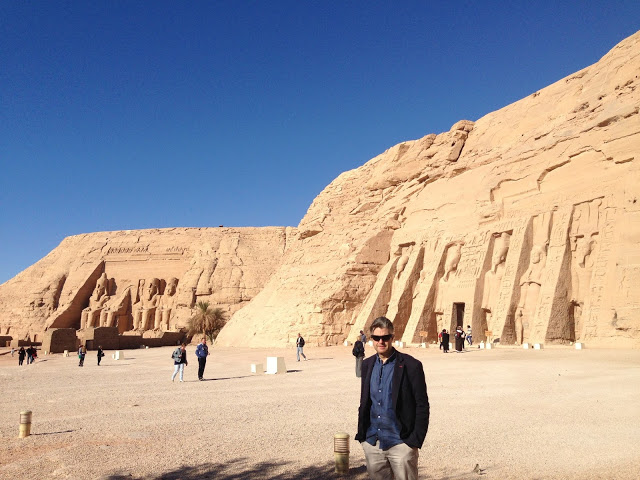
Cairo
In 969, led by General Gawhar al-Siqilli, the Fatimid Caliphate conquered Egypt and established a new fortified city northeast of Fustat. It took four years for Gawhar to build the city, initially known as al-Mansūriyyah, which was to serve as the new capital of the caliphate. During that time, Gawhar also commissioned the construction of al-Azhar Mosque, which developed into the second-oldest university in the world. Cairo would eventually become a center of learning, with the library of Cairo containing hundreds of thousands of books. When Caliph al-Mu’izz li Din Allah finally arrived from the old Fatimid capital of Mahdia in 973, the city was given its present name, al-Qahira (“The Victorious”), in reference to the caliph , For nearly two hundred years after Cairo was established, the administrative center of Egypt remained in Fustat. However, in 1168, the Fatamids, under the leadership of Vizier Shawar, set fire to Fustat to prevent Cairo’s capture by the Crusaders. Egypt’s capital was permanently moved to Cairo, which eventually expanded to include the ruins of Fustat and the previous capitals of al-Askar and al-Qatta’i. While the Fustat fire successfully protected the city of Cairo, a continuing power struggle between Shawar, King Amalric I of Jerusalem, and Syrian general Shirkuh led to the downfall of the Fatimid establishment .
In 1169, Saladin was appointed as the new vizier of Egypt and, two years later, he would seize power from the family of the last Fatimid caliph, Al-‘Āḍid. As the first Sultan of Egypt, Saladin established theAyyubid dynasty, based in Cairo and Damascus, and aligned Egypt with the Abbasids, who were based inBaghdad. During his reign, Saladin also constructed the Citadel, which served as the seat of Egyptian government until the mid-19th century.
In 1250, slave soldiers, known as the Mamluks, seized Egypt and, like many of their predecessors, established Cairo as the capital of their new dynasty. Continuing a practice started by the Ayyubids, much of the land occupied by former Fatimid palaces was sold and replaced by newer buildings. Construction projects initiated by the Mamluks pushed the city outward while also bringing new infrastructure to the center of the city. Meanwhile, Cairo flourished as a center of Islamic scholarship and a crossroads on thespice trade route between Europe and Asia. By 1340, Cairo had a population of close to half a million, making it the largest city west of China.
Cairo is located in northern Egypt, known as Lower Egypt, 165 kilometers (100 mi) south of theMediterranean Sea and 120 kilometers (75 mi) west of the Gulf of Suez and Suez Canal. The city is along the Nile River, immediately south of the point where the river leaves its desert-bound valley and branches into the low-lying Nile Delta region. Although the Cairo metropolis extends away from the Nile in all directions, the city of Cairo resides only on the east bank of the river and two islands within it on a total area of 214 square kilometers (83 sq mi).
Until the mid-19th century, when the river was tamed by dams, levees, and other controls, the Nile in the vicinity of Cairo was highly susceptible to changes in course and surface level. Over the years, the Nile gradually shifted westward, providing the site between the eastern edge of the river and the Mokattamhighlands on which the city now stands. The land on which Cairo was established in 969 (present-dayIslamic Cairo) was located underwater just over three hundred years earlier, when Fustat was first built.
Northern and extreme eastern parts of Cairo, which include satellite towns, are among the most recent additions to the city, as they developed in the late-20th and early-21st centuries to accommodate the city’s rapid growth. The western bank of the Nile is commonly included within the urban area of Cairo, but it composes the city of Giza and the Giza Governorate. Giza has also undergone significant expansion over recent years, and today the city, although still a suburb of Cairo, has a population of 2.7 million.The Cairo Governorate is just north of the Helwan Governorate, which was created in 2008 when some of Cairo’s southern districts, including Maadi and New Cairo, were split off and annexed into the new governorate.
Over the ages, and as far back as four thousand years, Egypt stood as the land where civilizations have always met. The Pharaohs together with the Greeks and the Romans have left their imprints here. Muslims from the Arabian Peninsula, led by Amr ibn al-A’as, introduced Islam into Egypt. Khedive Mohammad Ali, with his Albanian family roots, put Egypt on the road to modernity. If anything, the cultural mix in this country is natural, given its heritage. Egypt can be likened to an open museum with monuments of the different historical periods on display everywhere.
The Museum of Egyptian Antiquities, known commonly as the Egyptian Museum, is home to the most extensive collection of ancient Egyptian antiquities in the world. It has 136,000 items on display, with many more hundreds of thousands in its basement storerooms.
Khan el-Khalili is for many the most entertaining part of Cairo. It is an ancient shopping area, nothing less, but some of the shops have also their own little factories or workshops.
The suq (which is the Arabic name for bazaar, or market) dates back to 1382, when Emir Djaharks el-Khalili built a big caravanserai (or khan) right here. A caravanserai was a sort of hotel for traders, and usually the focal point for economic activity for any surrounding area. This caravanserai is still there, you just ask for the narrow street of Sikka Khan el-Khalili and Badestan.
The part of Cairo that contains Coptic Cairo and Fostat, which contains the Coptic Museum, Babylon Fortress, Hanging Church, the Greek Church of St. George, many other Coptic churches, the Ben Ezra Synagogue and Amr ibn al-‘As Mosque.
The Cairo Tower is a free-standing concrete TV tower in Cairo. It stands in the Zamalek district on Gezira Island in the Nile River, in the city centre. At 187 meters, it is 43 meters higher than the Great Pyramid of Giza, which stands some 15 km to the southwest.
Cairo also has many unregistered lead and copper smelters which heavily pollute the city. The results of this has been a permanent haze over the city with particulate matter in the air reaching over three times normal levels. It is estimated that 10,000 to 25,000 people a year in Cairo die due to air pollution-related diseases. Lead has been shown to cause harm to the central nervous system and neurotoxicity particularly in children. In 1995, the first environmental acts were introduced and the situation has seen some improvement with 36 air monitoring stations and emissions tests on cars. 20,000 buses have also been commissioned to the city to improve congestion levels, which are very high.
The city also suffers from a high level of land pollution. Cairo produces 10,000 tons of rubbish each day, 4,000 tons of which is not collected or managed. This once again is a huge health hazard and the Egyptian Government is looking for ways to combat this. The Cairo Cleaning and Beautification Agency was founded to collect and recycle the rubbish; however, they also work with the Zabbaleen (or Zabaleen), a community that has been collecting and recycling Cairo’s rubbish since the turn of the 20th century and live in an area known locally as Manshiyat Naser. Both are working together to pick up as much rubbish as possible within the city limits, though it remains a pressing problem.
The city also suffers from water pollution as the sewer system tends to fail and overflow. On occasion, sewage has escaped onto the streets to create a health hazard. This problem is hoped to be solved by a new sewer system funded by the European Union, which could cope with the demand of the city. The dangerously high levels of mercury in the city’s water system have global health officials concerned over related health risks. There is also more concern about environmental issues among Egyptians than before. There is now general awareness and some projects are laid down to help make the public aware of the importance of clean environment.
No Comments
Leave a Reply:
You must be logged in to post a comment.






